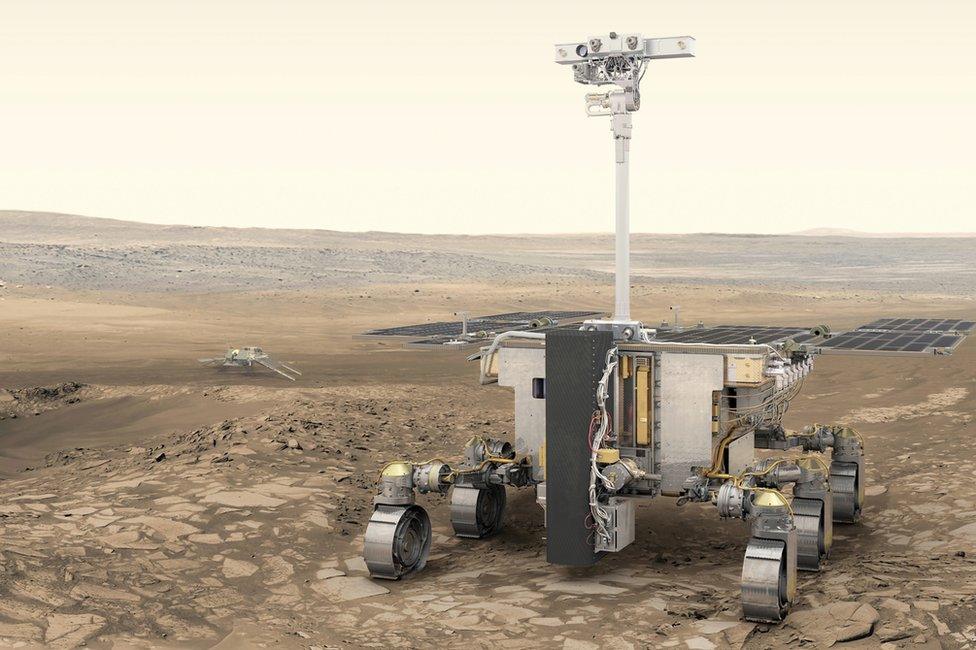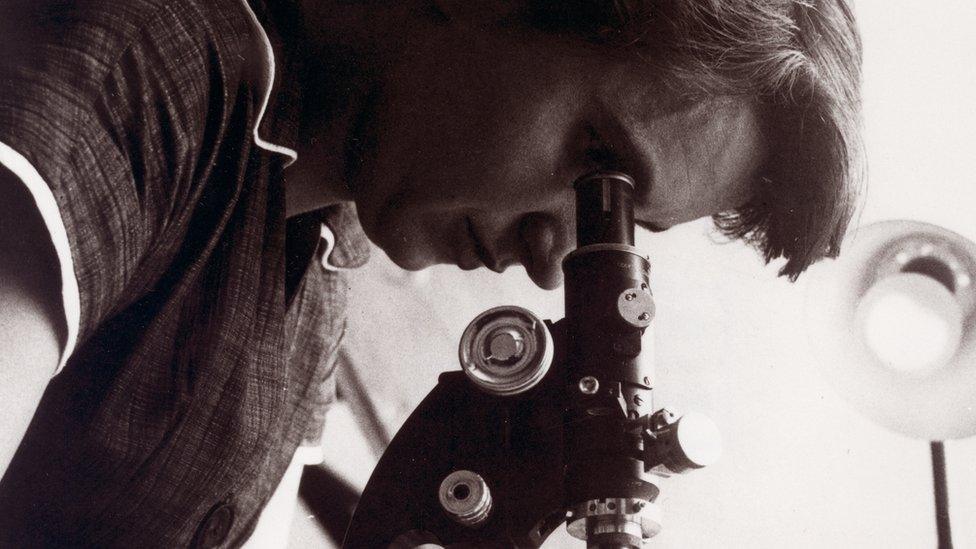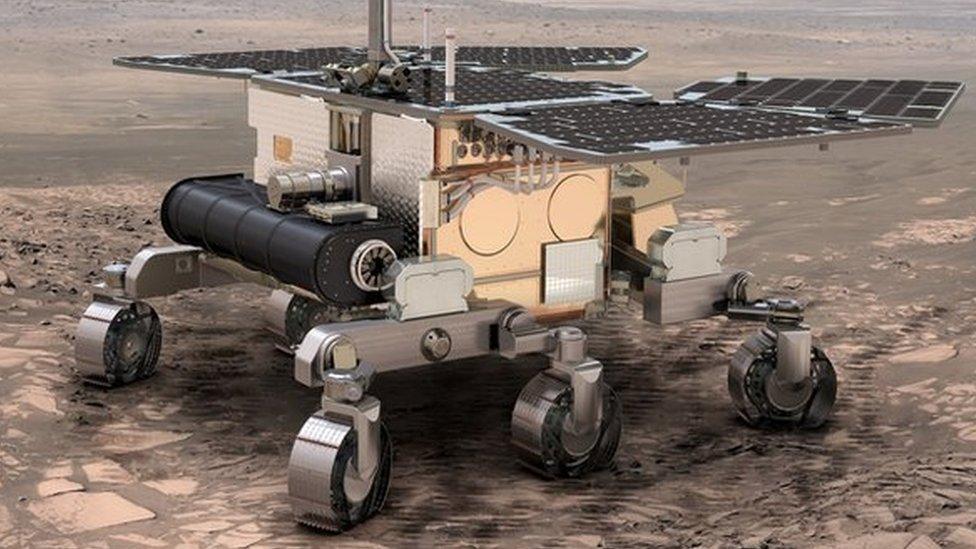Mars Rover: Who was Rosalind Franklin?
- Published
- comments

The Mars rover would land on the Red Planet in early 2021
The UK's new Mars Rover has had its name officially revealed by UK astronaut, Tim Peake.
The rover has been named after Rosalind Franklin, a British scientist who helped discover DNA!
Tim announced the winner after 33,000 members of the public sent in their suggestions.
The robot is expected to land on Mars in 2021, and among other things, it will try to find out whether life on Mars ever existed.
Who was Rosalind Franklin?

Rosalind Franklin is a scientist who's amazing achievements have often been ignored, until very recently.
She studied chemistry at the University of Cambridge, and served as an air raid warden during the Second World War.
She used X-rays to examine the shape of DNA.
DNA is what carries information that tells living organisms what to do - a bit like a computer program!

Rosalind's amazing discoveries were often overlooked by her colleagues.
It was only once James Watson and Francis Crick received fame for their discovery of the structure of DNA that she began to get more recognition.
Watson, Crick and Maurice Wilkins received a Nobel Prize for this achievement. At this point Rosalind had passed away so her discovery was not honoured.
Now she is will be honoured through the Mars Rover - so that her achievements might get more attention.
It's landing in a place that used to have water

Oxia Planum viewed from space
Back in November 2018, scientists decided the best place for the rover to land was in an area of Mars called Oxia Planum.
They chose it because it contains lots of clays and minerals which were formed by ancient rivers billions of years ago.
Any existence of life on Mars is likely to have been somewhere where there was once water.
It's not being done by Nasa

There'll be no 'one giant leap for...' moments on this voyage, mainly because there's no humans going but also because it's being done by the European Space Agency and not Nasa.
It's even being built in sunny Stevenage!
Britain has been chosen to give the Mars rover its name because it's put in a lot of the money to help build it.
America is planning to send its own rover to Mars in 2020 but we reckon Tim would say the Esa one is a lot cooler.
It's using super snazzy technology

The robot will have all the latest technology
It's really difficult getting to Mars.
According to Nasa, only about four in every 10 missions ever sent to Mars by any space agency have been successful.
Luckily the Mars rover is equipped with the latest technology.
It will do something called "wheel walking". It's a driving mode that sees the vehicle lift up its wheels and take steps instead of just rolling forward. It means it can avoid any nasty objects and can literally tip-toe out of sand traps.
It's also going to drive itself and this means that the scientists can focus on collecting actual science rather than worrying about directing the Mars rover's every move.
And, it will have a massive drill

The six-wheeled robot will be equipped with a state-of-the-art drill which will be able to dig two metres under ground to see if there are any bugs hiding away under the surface.
Unfortunately, "Spacey McSpaceface" was never in contention

European Space Agency astronaut Tim Peake showing off a model of the Mars Rover back in 2018.
Even though the public have been involved in naming the Mars rover, there's also been a panel of experts involved in the final decision.
33,000 people submitted their suggestions and Tim Peake will announce the winning name.
So, even if a couple of "Spacey McSpacefaces" slipped through the net, it was never likely that we'd have a repeat of the Boaty McBoatface drama.
- Published7 March 2018

- Published2 January 2019

- Published20 November 2018

